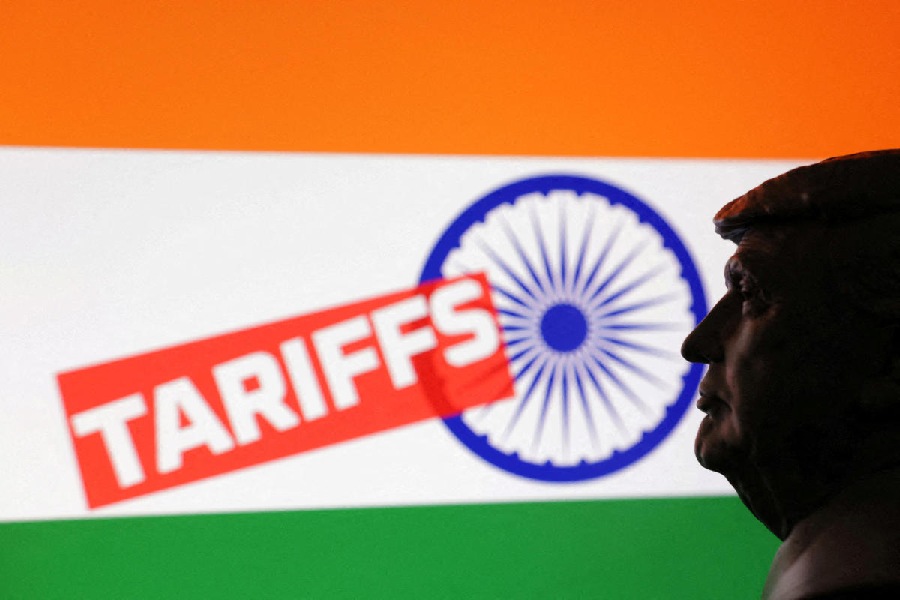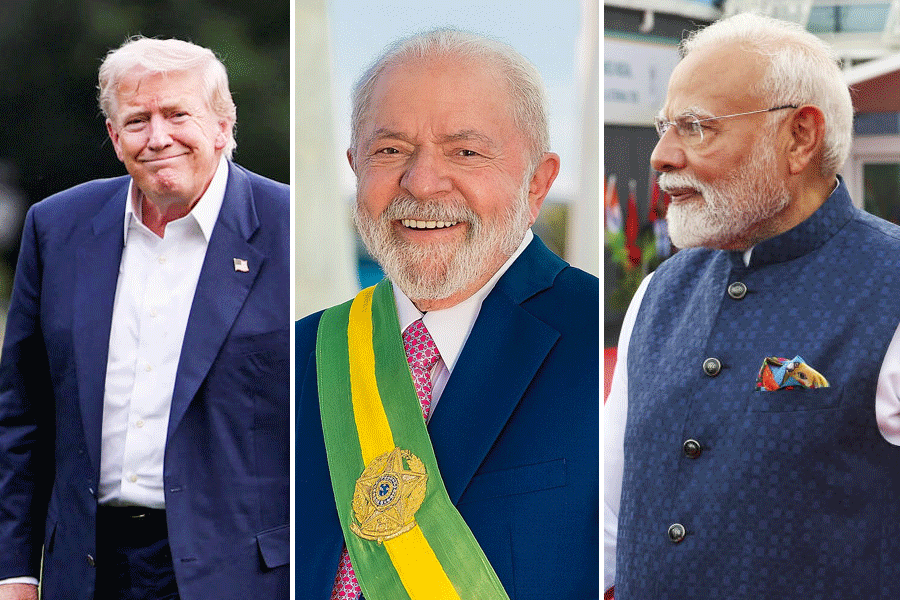India’s booming smartphone exports to the US, one of its biggest trade success stories in recent years, are facing a dramatic reversal as President Donald Trump announced a sweeping 25 per cent tariff on all Indian imports starting August 1, plus an unspecified penalty for buying Russian oil and weapons.
The decision follows months of high-level negotiations and optimistic messaging from Indian officials that have now ended in a major setback.
India’s mobile phone exports to the US soared from $2.2 billion in fiscal year 2023 to $5.7 billion in 2024, driven almost entirely by Apple’s contract manufacturers such as Foxconn, Dixon Technologies and Tata Electronics.
These firms, building high-end iPhones in India as part of Apple’s China+1 strategy, now find their biggest growth market under threat.
According to Canalys, a leading global tech market analyst firm, “The total volume of ‘Made-in-India’ smartphones grew 240 per cent year on year and now accounts for 44 per cent of smartphones imported into the US, up from only 13 per cent in the second quarter of 2024.” That stunning expansion is now in peril as tariffs make Indian-made iPhones significantly more expensive for US consumers.
The scale of Trump’s tariff blow is magnified by the fact that Indian officials had confidently predicted a trade breakthrough. Commerce minister Piyush Goyal had declared talks were “progressing very well,” while finance minister Nirmala Sitharaman described the US relationship as “strategic, forward-looking and built on mutual benefit.”
“India WILL THEREFORE BE PAYING A TARIFF OF 25%, PLUS A PENALTY … WE HAVE A MASSIVE TRADE DEFICIT WITH INDIA!!!” Trump wrote on Truth Social, blaming India for “the most strenuous and obnoxious non-monetary Trade Barriers of any Country.”
The new duties, which cover all Indian exports, are expected to impact more than $10 billion to $12 billion in annual trade, with sectors like textiles, gems and jewellery, auto parts, seafood and pharmaceuticals particularly exposed.
Trump said India will also face an additional, unspecified penalty for continuing to purchase oil and military hardware from Russia, a country the US says must be isolated over its war in Ukraine. Trump’s announcement that India would pay a penalty tariff for its purchases of Russian oil would be the first use of the so-called “secondary tariffs” that he has threatened to impose on countries for dealing with embargoed nations.
“India is a friend, but they have always bought a vast majority of their military equipment from Russia, and are Russia’s largest buyer of ENERGY, along with China, at a time when everyone wants Russia to STOP THE KILLING IN UKRAINE,” Trump wrote. He added bluntly: “ALL THINGS NOT GOOD! INDIA WILL THEREFORE BE PAYING A TARIFF OF 25%, PLUS A PENALTY FOR THE ABOVE.”
India currently buys over 2 million barrels per day of oil which is then refined and re-exported to other parts of the world like Europe and South East Asia. Oil prices could shoot up if Russian oil reaching the world via India goes completely off the global market.
“This is economic arm-twisting, plain and simple,” said Rakesh Mohan Joshi, vice-chancellor of the Indian Institute of Foreign Trade. “It undermines the spirit of partnership we’ve been working so hard to build.”
The US tariffs on India are lower than Brazil (50 per cent), Bangladesh (35 per cent), Canada (35 per cent), South Africa (30 per cent), Mexico (30 per cent), Thailand (36 per cent) and Cambodia (36 per cent), but they are the same or higher than the import duties imposed on most countries like South Korea (25 per cent), Malaysia (25 per cent), Vietnam (20 per cent), Indonesia (19 per cent), Japan (15 per cent) and the EU (15 per cent).
With the additional Russia penalty, India’s effective tariff could rise much higher. US Senator Lindsey Graham has warned that India could face 100 per cent tariffs over its continued purchase of Russian oil, adding fuel to fears of broader trade hostilities.
“India was one of the first countries to start trade talks with the Trump administration. It made many early concessions, including tariff reductions… India was still hit with 25 per cent tariffs,” said Washington-based South Asia analyst Michael Kugelman.
Trump’s barrage of posts comes just weeks after Indian officials suggested a breakthrough was near in tariff talks. Now, instead of a deal, New Delhi finds itself facing some of the harshest US trade penalties in years.
On Wednesday, Trump wrote that the deadline to finalize tariffs on many countries globally as of Friday “STANDS STRONG, AND WILL NOT BE EXTENDED.”
Indian negotiators appear to have underestimated the Trump administration’s desire for immediate results. Incremental offers on market access, such as softening import restrictions on US medical devices or agricultural goods, were dismissed in Washington as too little, too late and “half offers.”
Indian officials had believed that Delhi’s growing alignment on security and defence, semiconductors and China policy would shield trade from political fire, but Trump appears ready to decouple economic ties from strategic security cooperation.
The US accounts for over 17 per cent of India’s total exports, valued at $77 billion last year. US imports totalled $40.7 billion. A 25 per cent tariff effectively erases India’s pricing export advantage in many sectors. Total bilateral trade in 2024 hit a record $118.2 billion, with India holding a trade surplus of $36.8 billion.













